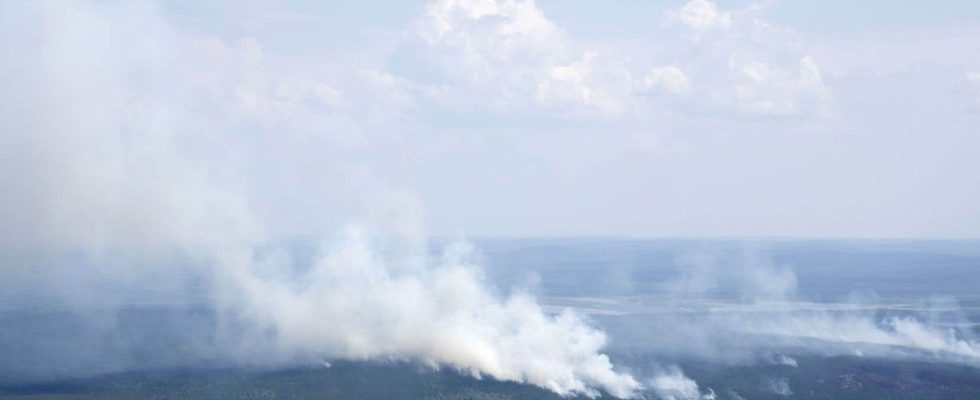Smoke from wildfires hanging over communities across Canada in recent months has highlighted the need for better ventilation in buildings used by the public, say experts who want tough indoor air quality standards in place.
Health issues related to wildfire smoke came to the fore this week after a nine-year-old boy in British Columbia died of asthma exacerbated by wildfire smoke.
Experts say current air quality guidelines for public spaces are not sufficient to prevent small particles, including smoke pollutants, from circulating inside buildings.
With wildfires set to increase in the coming years – estimates say they will increase by 25% by 2030 – thinking about how to make indoor air safer to breathe is paramount, experts say.
“Particles, fine particles in the air – smoke is one of them – are by far the most harmful pollutant and cause the most damage to public health,” says Joey Fox, engineer and chair of the indoor air quality advisory group for the Society of Professional Engineers of Ontario.
Air quality regulations vary by federal and provincial jurisdiction, but none mandate the use of high-efficiency particulate filters — or HEPA — or those with a minimum efficiency ratio value of 13 — called MERV-13 — or higher.
Many organizations choose to upgrade their ventilation systems, but Fox believes high-quality filters should be a requirement, not a suggestion.
“The buildings made us sick,” he says. Using filters that help protect people is something we really need to push forward. »
According to the Canadian Center for Occupational Health and Safety, studies show that poor indoor air quality in office buildings and schools is associated with increased health problems, absenteeism, lost productivity and strained employee-employer relations.
Health Canada recommends that public buildings and institutions install mechanical heating, ventilation and air conditioning (HVAC) systems that can be equipped with a MERV-13 or higher filter to remove fine particles, but this is not legally required.
Variable standards
School boards across Canada are investing in improving air quality in classrooms to prevent communicable diseases, especially since the COVID-19 pandemic, but standards and recommendations vary.
In Ontario, school boards are expected to use MERV-13 filters for schools with mechanical ventilation.
In British Columbia, it is recommended that school districts “regularly maintain HVAC systems” and open windows whenever possible. The province says it has spent $2.5 million to install 1,914 stand-alone HEPA filtration units in classrooms without mechanical ventilation.
Stéphane Bilodeau, indoor ventilation expert and lecturer in McGill University’s bioengineering department, says it’s time to go beyond the suggestions for indoor air quality.
“There should be a little more than just a recommendation, because it doesn’t just affect people but society,” he said. If you let a large number of people be affected by their health, it will certainly affect the health system in some respects. »
Most building codes in Canada use what is called the ASHRAE 62.1 standard to quantify the level of ventilation and indoor air quality that is acceptable for humans.
Standards recommend a minimum level of filtration at MERV-8, but while this is effective at preventing dust and some air pollution, experts say it’s not enough to keep out extreme pollutants such as smoke from wildfires.
“Standards for new buildings in Canada are still based on filtration, which is not high-efficiency filtration…so that’s where the problem lies,” says Bilodeau.
Jeffrey Siegel, a professor of civil engineering at the University of Toronto, says there’s a lack of communication from public health officials about the benefits of improving air quality.
“For most Canadians, what we breathe indoors is our number one environmental health risk,” he says.
